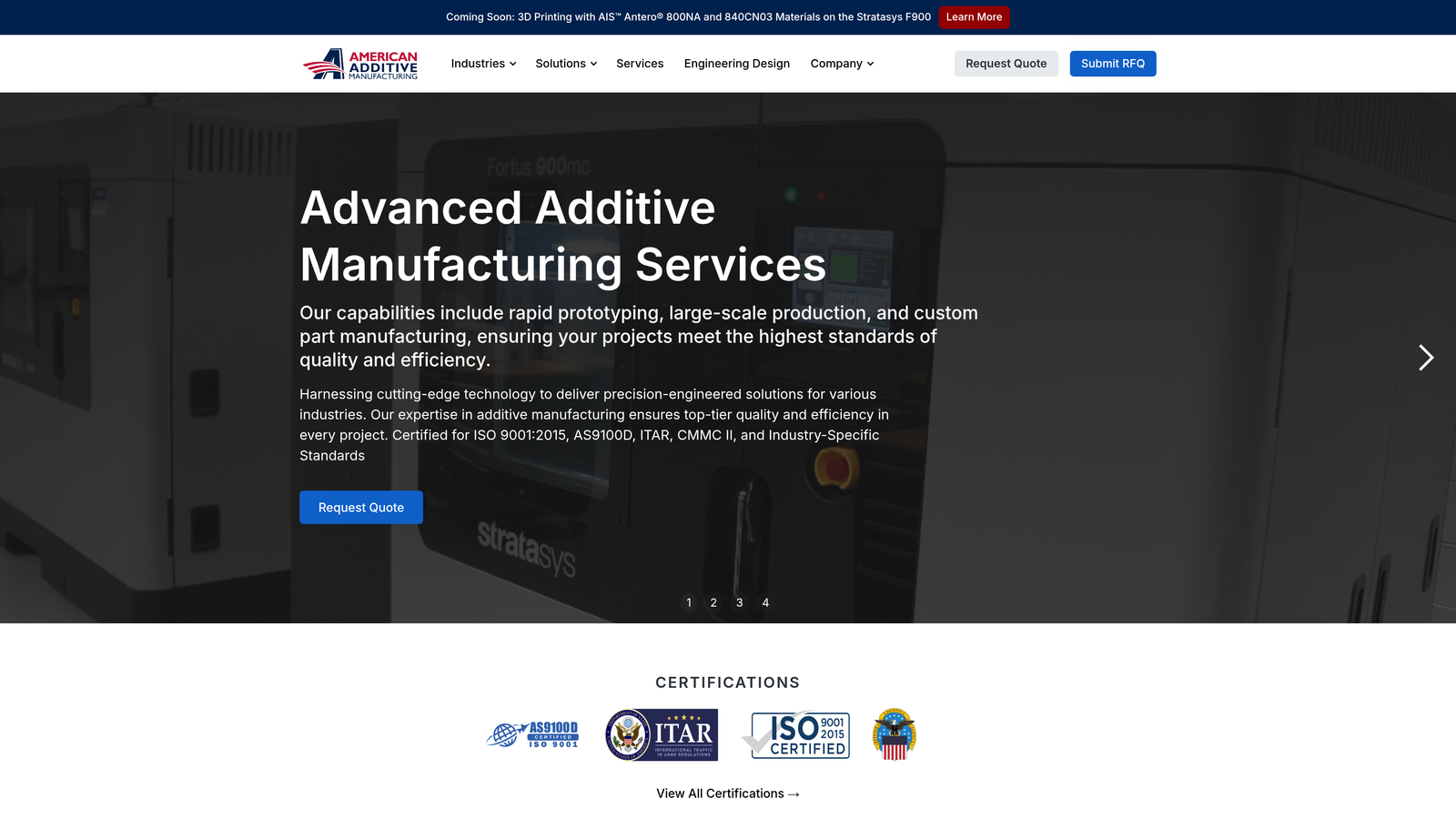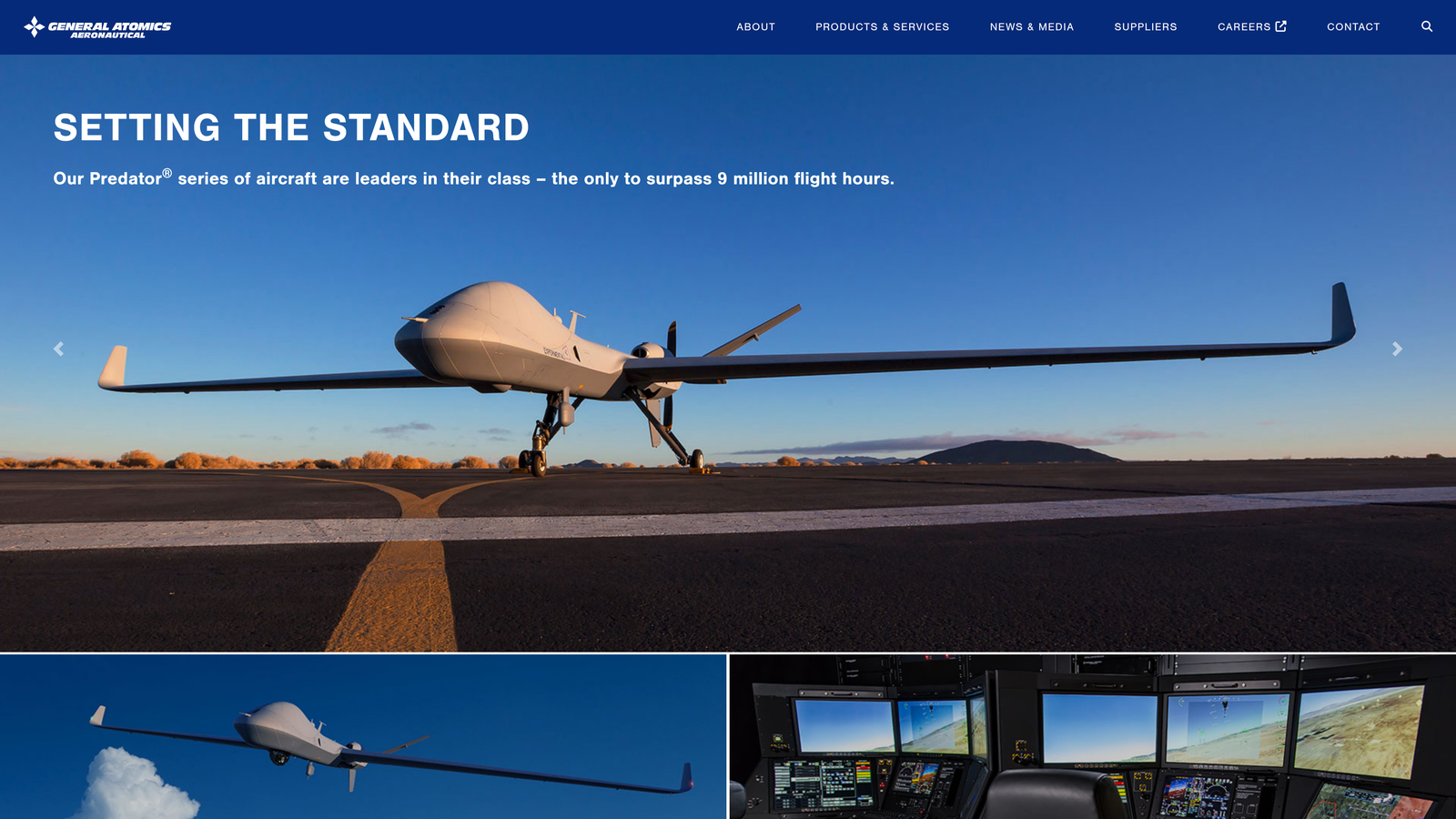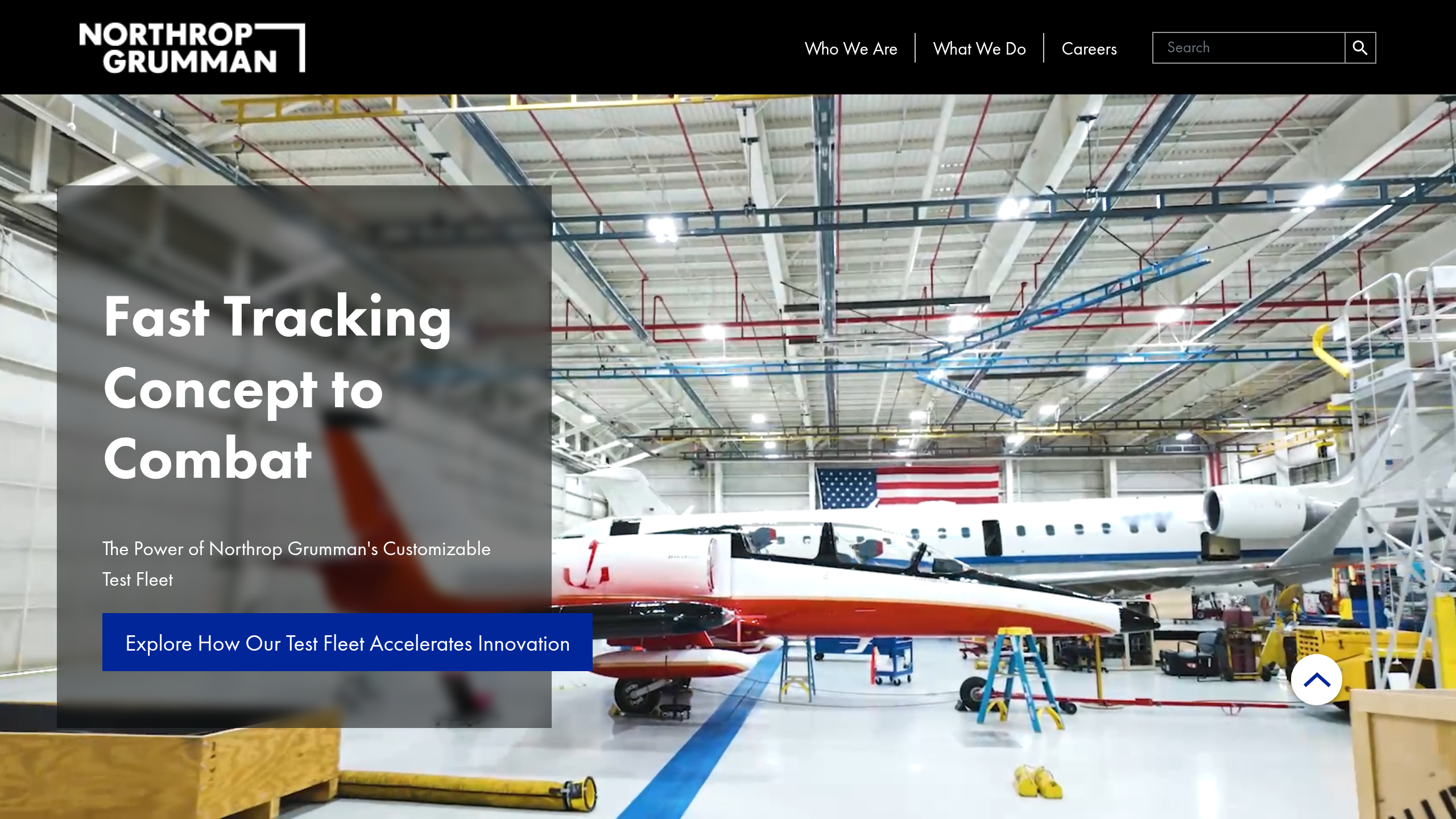Coming Soon: 3D Printing with AIS™ Antero® 800NA and 840CN03 Materials on the Stratasys F900Learn More

Imagine a world where manufacturing UAVs isn't just about speed but also about flexibility, customization, and efficiency. Traditional methods often leave manufacturers struggling with long lead times, high material waste, and design limitations. As the demand for UAVs in various sectors, including defense and industrial applications, continues to grow, the need for a revolutionary approach to design and manufacturing has never been clearer. Enter UAV 3D printing, a transformative technology that is reshaping how we think about designing and producing unmanned aerial vehicles, especially in challenging aerospace and military applications.
In the rapidly evolving landscape of aerospace and defense, high performance UAV 3D printing stands out for its ability to produce complex geometries and lightweight components that were previously unimaginable. By leveraging advanced materials like PEI (ULTEM), PEKK (ANTERO) and PEEK, manufacturers can optimize the performance of UAVs while reducing the overall weight and improving durability. This shift is not just theoretical; it's being adopted by leading companies in the aerospace sector, indicating a robust trend towards integrating 3D printing into their operations.
By the end of this article, you will understand the key players in UAV 3D printing, the challenges of traditional manufacturing, and the substantial benefits that this innovative approach offers. Let's dive into the top five aerospace and military UAV 3D printing adopters that are leading the charge in this exciting field.
Best for: High-performance UAV components and rapid prototyping.
American Additive Manufacturing is a leader in high-performance 3D printing and Additive Manufacturing for aerospace applications, specializing in flight-ready components, custom tooling, and composite layup molds using advanced polymer materials like ULTEM, ANTERO, PEEK and other high performance materials. Their expertise in Additive Manufacturing allows them to deliver robust, lightweight components that meet the rigorous demands of aerospace and military UAV production.

Overview & Background: American Additive Manufacturing has positioned itself as a key player in the UAV 3D printing sector. With a focus on aerospace and defense applications, the company employs advanced materials that are essential for producing components that can withstand extreme conditions. Their dedication to quality is underscored by AS9100D certification, ensuring that all products meet stringent aerospace standards.
Key Features:
1. Engineering Collaboration: American Additive emphasizes collaboration with clients, ensuring that designs are optimized for performance and manufacturability.
2. Precision and Reliability: Utilizing advanced Stratasys technology, they produce highly precise components that maintain consistency across batches.
3. Large Build Envelopes: Their 3D printers can accommodate larger components (up to 36"x24"x36"), making them ideal for various UAV sizes and designs. Small components can be made on the large printers at production quantities.
4. Materials to fit the application: Broad range of specialized polymer printing materials used to meet a wide variety of rigorous applications.
How It Works: The process begins with a detailed design phase, where customers finalize their design or work closely with American Additive's engineers to refine specifications. Once the 3D CAD Model design is finalized, it is then used to create the physical component using the selected material and the selected additive manufacturing technology. This streamlined process not only optimizes design, but does so with reduced lead times for production parts and rapid prototyping, enabling clients to test designs quickly.
Why It's Great for UAV Manufacturers: American Additive Manufacturing stands out for its ability to consistently deliver customized solutions tailored to the specific needs of high performance UAV manufacturers, making it an invaluable partner in the aerospace and military sectors.
Best for: Next-generation UAV solutions utilizing advanced materials.
General Atomics is at the cutting edge of UAV technology, focusing on advanced materials and rapid production techniques to deliver next-generation solutions.

Overview & Background: General Atomics has established itself as a leader in developing innovative UAV technologies. Their focus on advanced manufacturing processes, including 3D printing, enables them to create highly sophisticated UAV systems.
Key Features:
1. Innovative Material Use: General Atomics utilizes advanced materials that enhance UAV performance, durability, and operational capabilities.
2. Rapid Production Capabilities: Their 3D printing processes allow for quick turnaround times, enabling faster deployment of UAVs.
3. Focus on Autonomy: The integration of 3D printing supports their commitment to developing autonomous UAV systems that operate efficiently in complex environments.
How It Works: General Atomics employs a collaborative approach to UAV development, working closely with engineers and suppliers to optimize designs for performance and manufacturability using 3D printing technologies.
Why It's Great for UAV Manufacturers: General Atomics’ innovative approach and focus on advanced materials make it a valuable partner for customers looking to push the boundaries of UAV technology.
Best for: Advanced UAV systems and innovative manufacturing techniques.

Northrop Grumman is a prominent figure in the aerospace and defense sectors, recognized for its commitment to integrating 3D printing technologies into UAV manufacturing. The company focuses on enhancing the performance and capabilities of unmanned aerial vehicles through innovative design and advanced manufacturing processes.
Overview & Background: Northrop Grumman has been pivotal in advancing UAV technology, utilizing 3D printing to produce complex components that improve overall system performance. Their extensive experience in aerospace and defense enables them to meet the stringent requirements of military applications.
Key Features:
1. Complex Component Manufacturing: Northrop Grumman employs additive manufacturing techniques to create intricate components that traditional methods cannot produce, enhancing UAV functionality.
2. Material Versatility: The company utilizes a variety of advanced materials, including composites and metals, to ensure durability and performance in challenging environments.
3. Rapid Development Cycles: Their integration of 3D printing allows for faster prototyping and production, significantly reducing time to market for new UAV designs.
How It Works: Northrop Grumman's approach involves a collaborative design process, where engineers and clients work together to optimize UAV designs for 3D printing. This method ensures that each component is tailored for specific operational needs while adhering to strict quality standards.
Why It's Great for UAV Manufacturers: Northrop Grumman's expertise in advanced UAV systems and commitment to innovation make it an ideal partner for customersseeking to enhance their capabilities and stay competitive in the aerospace sector.
Best for: Defense-oriented UAV applications with a focus on rapid prototyping.
Lockheed Martin excels in leveraging 3D printing for defense-focused UAVs, emphasizing rapid prototyping and complex geometries to meet military specifications.

Overview & Background: Lockheed Martin has embraced additive manufacturing as a key enabler of innovation in UAV development. Their focus on defense applications means they often work under stringent regulatory requirements, which they meet through advanced manufacturing techniques.
Key Features:
1. AS9100D Compliance: Lockheed Martin's commitment to quality is reflected in their adherence to industry standards, ensuring reliability in defense applications.
2. Material Diversity: They utilize a range of materials, including carbon fiber, to enhance UAV performance and durability.
3. Innovative Prototyping Techniques: Their rapid prototyping capabilities allow for quick adjustments to designs, facilitating faster deployment of new UAV systems.
How It Works: Lockheed Martin employs a systematic approach to UAV development, utilizing 3D printing for both prototyping and production. The company integrates feedback from testing to refine designs before full-scale manufacturing.
Why It's Great for UAV Manufacturers: Lockheed Martin's expertise in defense applications and commitment to quality make them a trusted partner for UAV customers focused on military solutions.
Best for: Versatile UAV solutions with a focus on innovative manufacturing processes.
Textron Systems is a key player in the UAV market, known for its commitment to integrating advanced manufacturing techniques, including 3D printing, into its production processes. The company focuses on delivering a range of UAV solutions that cater to both military and commercial applications.

Overview & Background: Textron Systems has been at the forefront of UAV development, leveraging 3D printing technologies to enhance design capabilities and streamline production. Their focus on innovative manufacturing processes allows them to produce UAVs that meet the rigorous demands of various operational environments.
Key Features:
1. Advanced Material Utilization: Textron employs a variety of high-performance materials in their 3D printing processes, ensuring that UAV components are not only lightweight but also durable and resilient.
2. Rapid Prototyping and Production: The integration of 3D printing enables Textron to quickly prototype new designs, allowing for faster iterations and reduced time to market for new UAV solutions.
3. Customization and Flexibility: Their approach to manufacturing emphasizes customization, enabling clients to receive UAVs tailored to their specific operational needs.
How It Works: Textron Systems follows a collaborative design process, working closely with clients to understand their requirements and optimize UAV designs for 3D printing. This process not only enhances performance but also allows for more innovative designs that traditional manufacturing methods may not accommodate.
Why It's Great for UAV Manufacturers: Textron Systems' commitment to innovation and flexibility in UAV manufacturing makes it an excellent partner for UAV customers.
The landscape of UAV manufacturing is undergoing a significant transformation thanks to the adoption of 3D printing technologies. Companies like American Additive Manufacturing, General Atomics, Northrop Grumman, Lockheed Martin, and Textron Systems are leading the way, demonstrating the numerous advantages of this innovative approach. From enhanced design flexibility and reduced lead times to the ability to produce lightweight, high-performance components, UAV 3D printing is setting new standards in the industry.
As you consider the next steps in your UAV manufacturing journey, think about how these pioneers in 3D printing can inspire your own strategies. The potential for innovation is immense, and embracing these technologies can position your company at the forefront of the aerospace sector.
If you're ready to explore how UAV 3D printing can optimize your designs and system performance, request a quote today and start your journey towards revolutionizing UAV manufacturing.